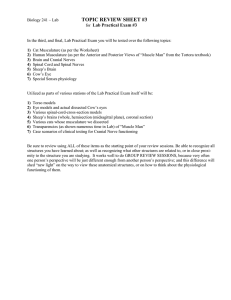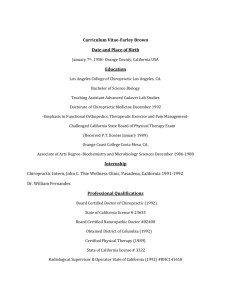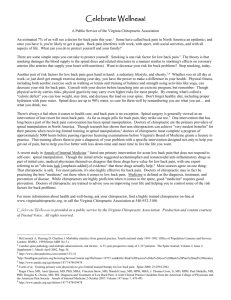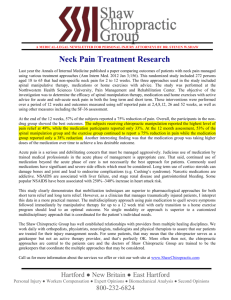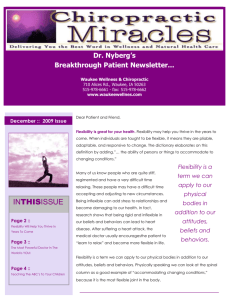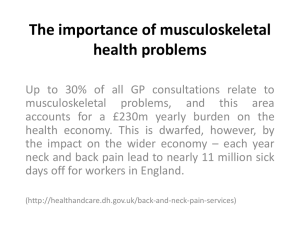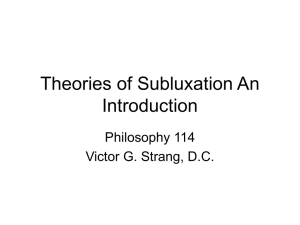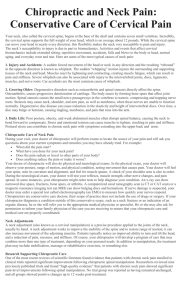proper coding for upper level cmt codes
advertisement
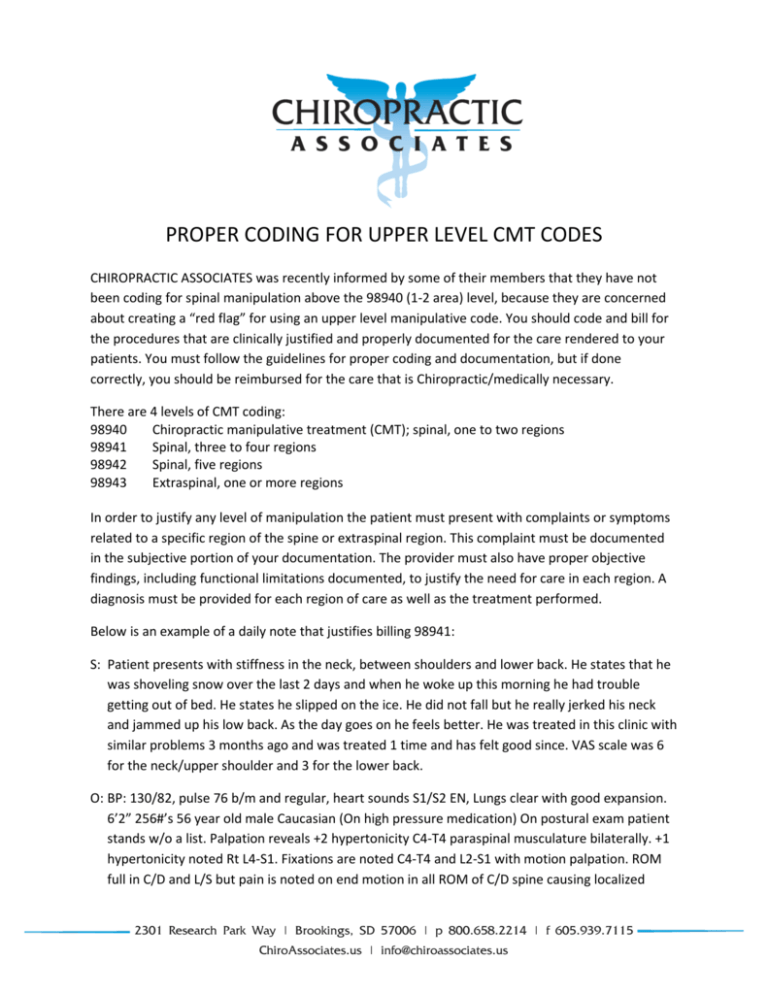
PROPER CODING FOR UPPER LEVEL CMT CODES CHIROPRACTIC ASSOCIATES was recently informed by some of their members that they have not been coding for spinal manipulation above the 98940 (1-2 area) level, because they are concerned about creating a “red flag” for using an upper level manipulative code. You should code and bill for the procedures that are clinically justified and properly documented for the care rendered to your patients. You must follow the guidelines for proper coding and documentation, but if done correctly, you should be reimbursed for the care that is Chiropractic/medically necessary. There are 4 levels of CMT coding: 98940 Chiropractic manipulative treatment (CMT); spinal, one to two regions 98941 Spinal, three to four regions 98942 Spinal, five regions 98943 Extraspinal, one or more regions In order to justify any level of manipulation the patient must present with complaints or symptoms related to a specific region of the spine or extraspinal region. This complaint must be documented in the subjective portion of your documentation. The provider must also have proper objective findings, including functional limitations documented, to justify the need for care in each region. A diagnosis must be provided for each region of care as well as the treatment performed. Below is an example of a daily note that justifies billing 98941: S: Patient presents with stiffness in the neck, between shoulders and lower back. He states that he was shoveling snow over the last 2 days and when he woke up this morning he had trouble getting out of bed. He states he slipped on the ice. He did not fall but he really jerked his neck and jammed up his low back. As the day goes on he feels better. He was treated in this clinic with similar problems 3 months ago and was treated 1 time and has felt good since. VAS scale was 6 for the neck/upper shoulder and 3 for the lower back. O: BP: 130/82, pulse 76 b/m and regular, heart sounds S1/S2 EN, Lungs clear with good expansion. 6’2” 256#’s 56 year old male Caucasian (On high pressure medication) On postural exam patient stands w/o a list. Palpation reveals +2 hypertonicity C4-T4 paraspinal musculature bilaterally. +1 hypertonicity noted Rt L4-S1. Fixations are noted C4-T4 and L2-S1 with motion palpation. ROM full in C/D and L/S but pain is noted on end motion in all ROM of C/D spine causing localized 2301 Research Park Way | Brookings, SD 57006 | p 800.658.2214 | f 605.939.7115 ChiroAssociates.us | info@chiroassociates.us musculature pain C/D junction bilaterally. Extension causes pain midline and to the rt at L/S. Orthopedic tests Soto Hall and Lt and Rt shoulder depression tests are positive pulling through the C/D paraspinal musculature. Kemps test reproduces pain locally midline L/S and to the Rt w/o radiation. Muscle strength is 5/5 upper and lower extremity as well as 2+ reflexes of the Achilles, Petella, Brachioradiallis, Tricep and Bicep. A: Acute Cervical/Dorsal and Lumbosacral strain with segmental dysfunction (847.0 847.1, 846.0, 739.1, 739.2, 739.3) P: Cox Flexion/Distraction technique; deep trigger point work through the traps, levator scapulae, and C/D paraspinal musculature; spinal manipulation to the C/D and L/S; electrical stimulation C/D and L/S for 23 minutes high current. Patient instructed on icing 4 times per day, no lifting out of strike zone and keep it close to your body and under 15 pounds. Watch posture when sitting and sleeping. Return in 2 days. Patient felt better after treatment but was still tender on rotation of the neck and extension of the lower back. PROCEDURE CODES BILLED: 99212.25, 98941, and 97014 2301 Research Park Way | Brookings, SD 57006 | p 800.658.2214 | f 605.939.7115 ChiroAssociates.us | info@chiroassociates.us
